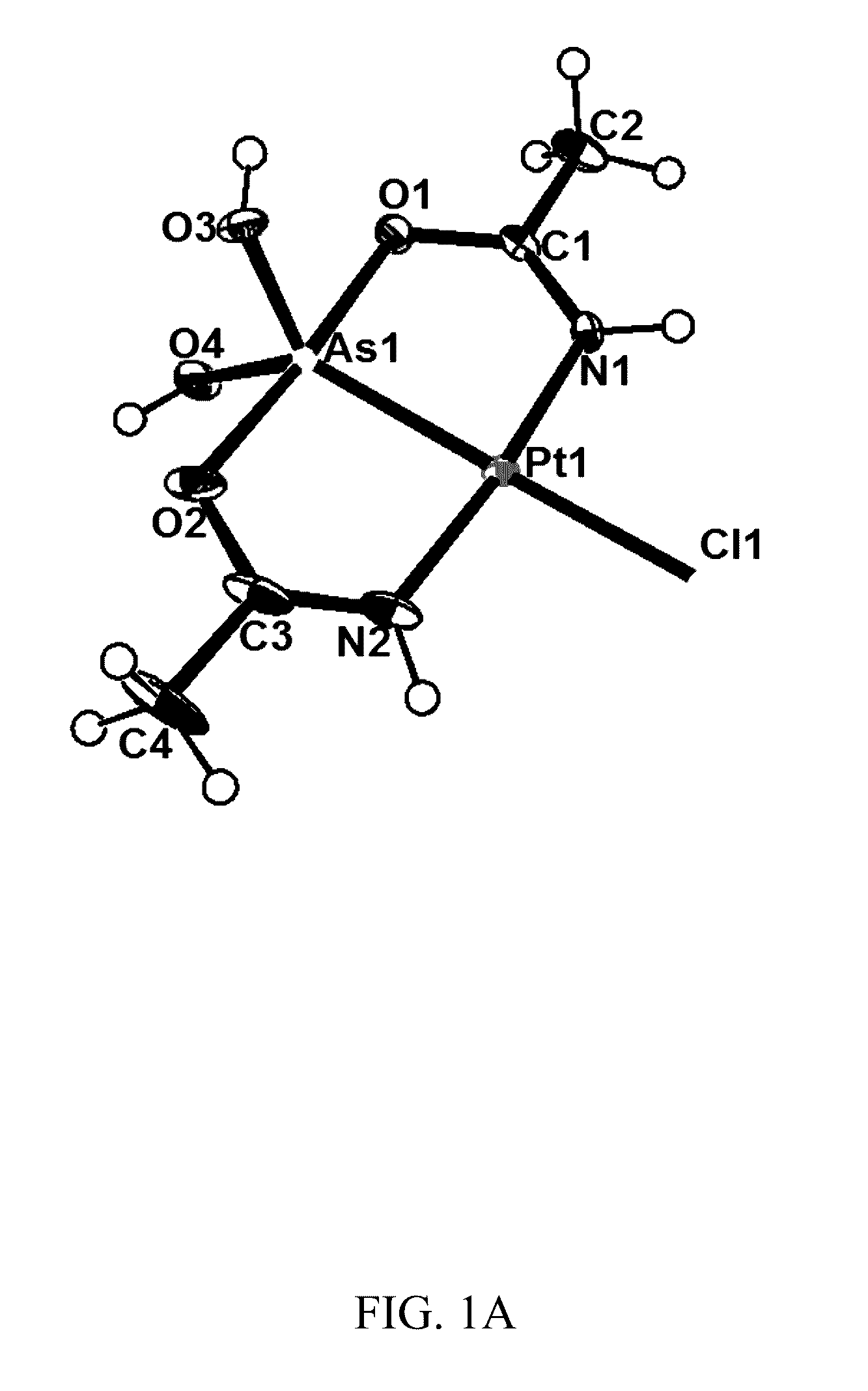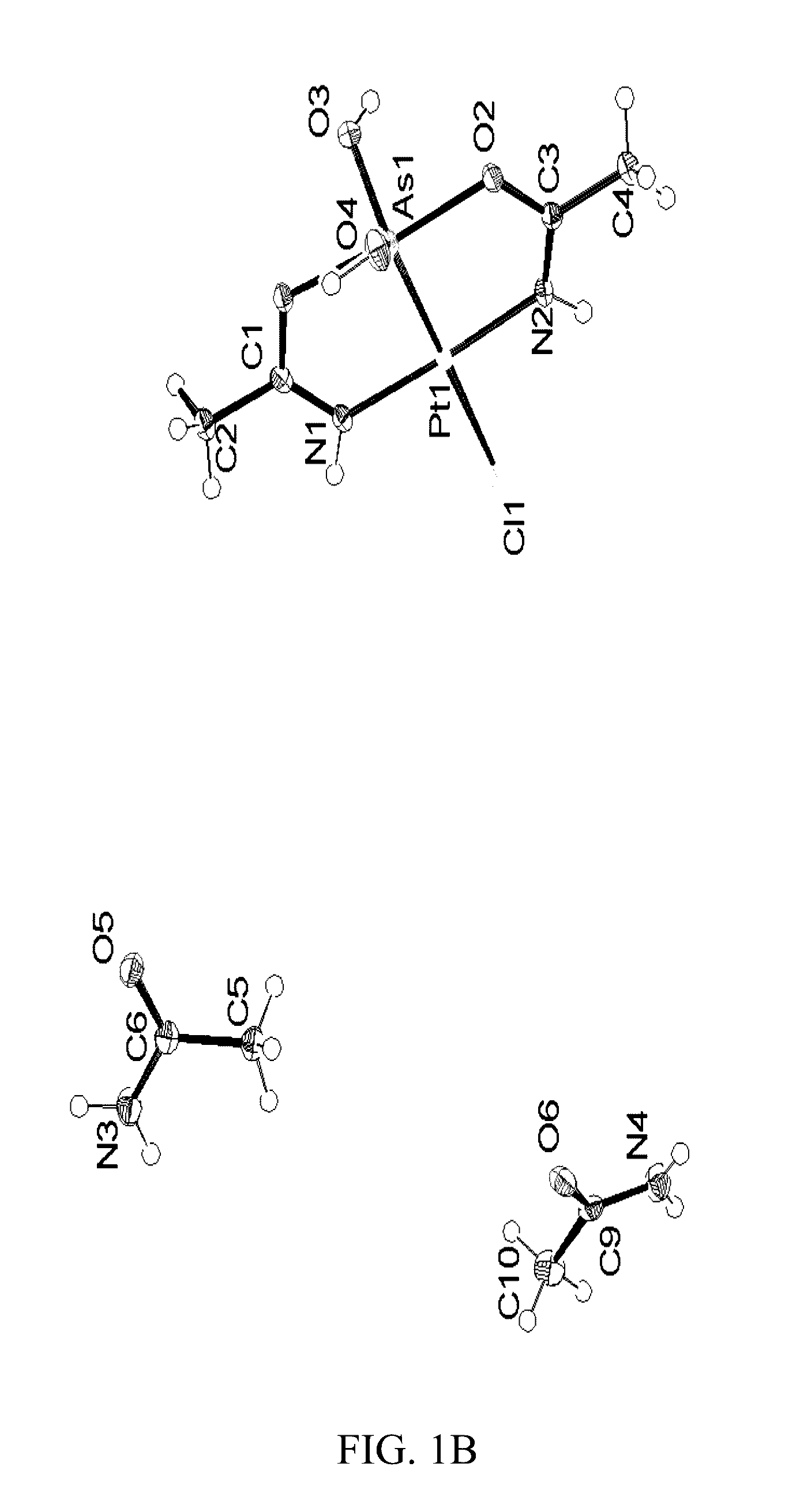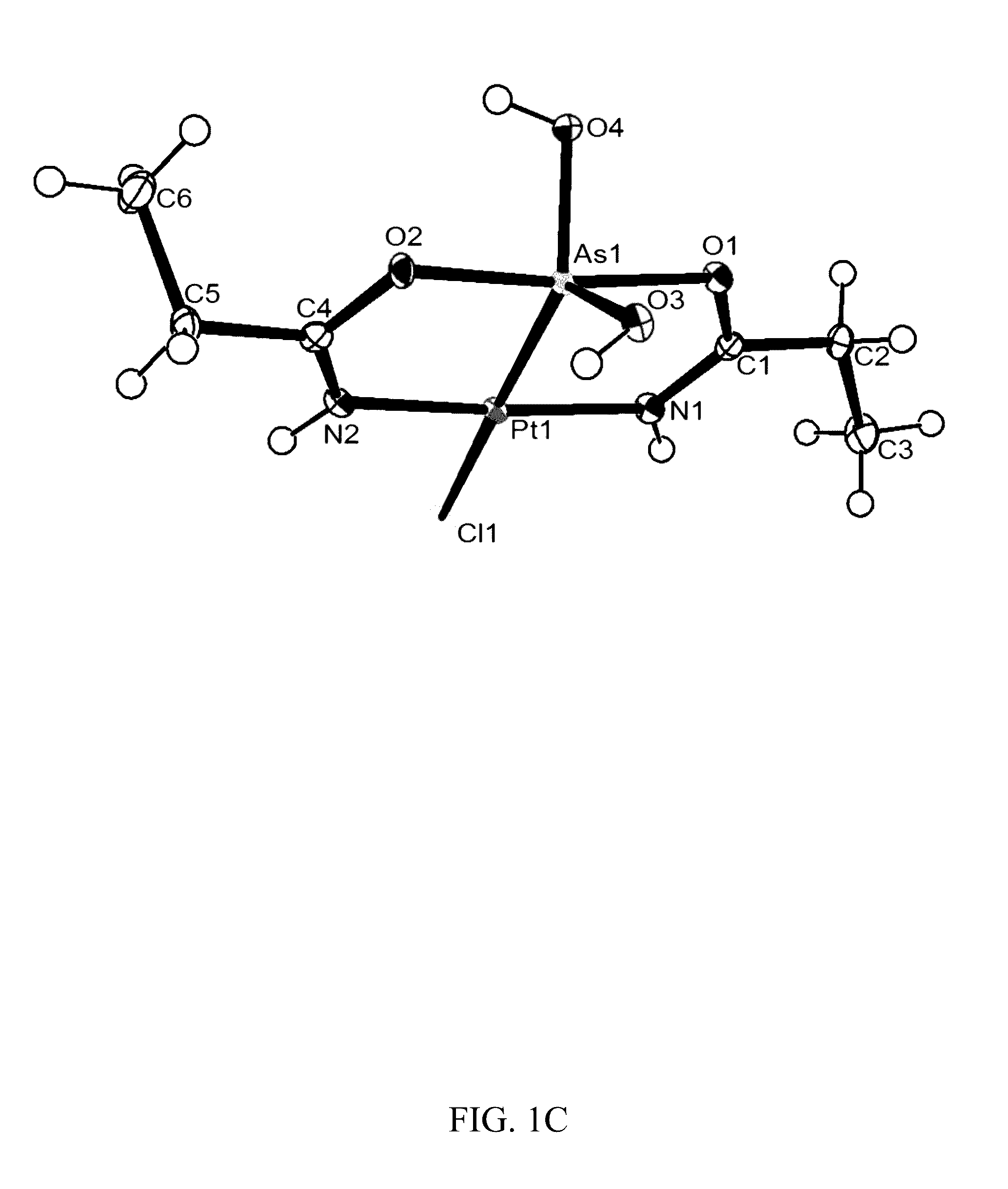Arsenoplatin Anti-cancer agents
- Summary
- Abstract
- Description
- Claims
- Application Information
AI Technical Summary
Benefits of technology
Problems solved by technology
Method used
Image
Examples
example 1
General Methods
[0109]Cisplatin, K2[PtCl4], DMSO, methanol, acetonitrile, propionitrile and As2O3 were purchased from Sigma-Aldrich and used without further purification. Media for the cell cultures and all other cell supplements were purchased from Invitrogen. The following spectrometers were used: NMR: Bruker Avance-III 600 and 500 MHz; chemical shifts (1H, 13C) were referenced to tetramethylsilane at 0.000 ppm 1H and 13C if it was present, and to residual solvent signal for samples in which TMS was absent (for [D6]DMSO, δH=2.50 ppm and δC=39.5 ppm). The 195Pt (129 MHz) and 15N (61 MHz) NMR spectra were acquired on a 600 MHz Bruker Avance III spectrometer equipped with BBO (broadband observe) probe. 195Pt NMR chemical shifts were referenced indirectly to TMS in 1H NMR spectrum such that Na2195PtCl6 in D2O would resonate at 0.0 ppm. 15N NMR chemical shifts, both those observed directly in 15N-detect 1D experiments and 2D 1H-15N HSQC experiments, were referenced indirectly to TMS in ...
example 2
Synthesis of compound (1) (arsenoplatin, [Pt(μ-NHC(CH3)O)2ClAs(OH)2])
[0110]Cisplatin (300 mg, 1.00 mmol) or K2[PtCl4] (415 mg, 1.00 mmol) was added to 125 cm3 of 9:1 CH3CN / H2O (v / v). The mixture was stirred at 90° C. Once the platinum compound was dissolved, 396 mg As2O3(2.00 mmol) was added to the solution, and the reaction mixture was stirred at 90° C. for 72 hours. The resulting mixture was filtered, and the filtrate was left at room temperature in a glass beaker for approximately 4 weeks until crystals formed. Crystals suitable for a single crystal X-ray analysis were retrieved from solution. The solution was filtered, washed with CH3CN:H2O (9:1 mixture), and the obtained crystals were dried in a dessicator. Yield 350 mg product (75%; 23% when cisplatin is used). Complex is soluble in DMSO, methanol, ethanol, and partially in water. Elemental analysis (% calcd. found for C7H18.5AsClN3.5O6Pt): C (15.20, 15.24), H (3.37, 3.36), N (8.86, 8.69). NMR: 1H NMR (600 MHz, [D6]DMSO, 25° C...
example 3
Synthesis of compound (2) ([Pt(μ-NHC(CH3CH2)O)2ClAs(OH)2])
[0111]K2[PtCl4] (415 mg, 1.00 mmol) was added to 50 cm3 of 9:1 H2O / propionitrile (v / v). The mixture was stirred at room temperature. Once the platinum compound was dissolved, 396 mg As2O3 (2.00 mmol) of the reaction mixture was stirred at room temperature for 96 hours.
[0112]LC / ESI-MS data were recorded every 24 hours. The color gradually turned yellow and ultimately colorless over the 4 day period. The resulting mixture was filtered and left to sit (pH roughly 2) at 25° C., and, within a week, crystals suitable for single crystal X-ray analysis appeared. The solution was filtered again, washed with H2O, dried, and weighed (212 mg, 44%). Compound (2) is soluble in methanol, DMSO, and partially soluble in H2O.
[0113]Elemental analysis (% calcd. found for C6H14AsClN2O4Pt): C (14.90, 14.80), H (2.92, 2.60), N (5.79, 5.82). NMR: 1H NMR (500 MHz, [D6]DMSO): δ 8.91 (s, 2H—OH), 8.04 (s, 2H—NH), 2.47 (q, J=7.6 Hz, 4H—CH2), 1.04 (t, J=7...
PUM
 Login to View More
Login to View More Abstract
Description
Claims
Application Information
 Login to View More
Login to View More - R&D
- Intellectual Property
- Life Sciences
- Materials
- Tech Scout
- Unparalleled Data Quality
- Higher Quality Content
- 60% Fewer Hallucinations
Browse by: Latest US Patents, China's latest patents, Technical Efficacy Thesaurus, Application Domain, Technology Topic, Popular Technical Reports.
© 2025 PatSnap. All rights reserved.Legal|Privacy policy|Modern Slavery Act Transparency Statement|Sitemap|About US| Contact US: help@patsnap.com



